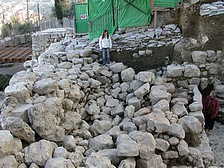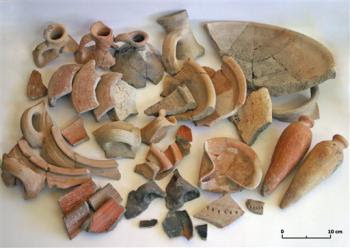
From the Jerusalem Post:
A section of the 2,500-year-old Nehemiah wall may have been discovered in Jerusalem, just outside the Dung Gate and the Old City walls facing the Mount of Olives. The wall is dated to Nehemiah's period by pottery found during a recent dig at the site, said Hebrew University archeologist Dr. Eilat Mazar.

The archeologist, who rose to international prominence for her recent excavation that may have uncovered the biblical palace of King David, was able to date the wall to Nehemiah as a result of a dig carried out underneath a nearby tower, which has been previously dated to the Hasmonean period, (142-37 BCE) but which now emerges was built centuries earlier.
As a result of the excavation, both the 30 meter section of the wall and a six-by-three-meter part of the previously uncovered tower have now been dated to the fifth century BCE based on the rich pottery found during the dig under the tower, she said.
Scores of bullae, arrowheads and seals from that period were also discovered during the excavation."This find opens a new chapter in the history of Jerusalem," Mazar said. "Until now, we have never had such an archeological wealth of finds from Nehemiah's period."
From the AP:
A team of archaeologists discovered the wall in Jerusalem's ancient City of David during a rescue attempt on a tower that was in danger of collapse, said Eilat Mazar, head of the Institute of Archaeology at the Shalem Center, a Jerusalem-based research and educational institute, and leader of the dig.
Artifacts including pottery shards and arrowheads found under the tower suggested that both the tower and the nearby wall are from the 5th century B.C., the time of Nehemiah, Mazar said this week. Scholars previously thought the wall dated to the Hasmonean period from about 142 B.C. to 37 B.C.


0 Comments:
Post a Comment
<< Home